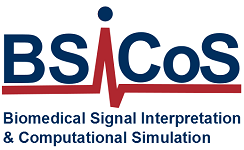29 Oct, 2021
Laura García, member of the BSiCoS Group, presents her research at the Spanish Cell Biology Society (SEBC) Congress
Age is one of the most relevant predisposing risk factors for cardiovascular diseases. Aged hearts undergo structural and functional changes that are orchestrated at the molecular level. The molecular basis is poorly characterized in humans due to the scarcity of tissue samples and human models. We aim to study transcriptome dynamics of the aging human left ventricle (LV) according to both chronological (CA) and biological (BA) age, and to establish cellular models that recapitulate the mechanisms of cardiac aging.
RNA-seq data of LV tissue were obtained from 132 males (20-70 years old) whose reported cause of death was unrelated to cardiovascular diseases. We performed gene set enrichment analysis (GSEA) between old and young individuals classified by CA or BA and correlation analysis with an age-related structural factor, cardiac fibrosis. We developed an hiPSC cell lineage containing an inducible progerin expression system that was induced after commitment to cardiomyocytes.
CA-based analysis showed enriched and depleted processes that are considered aging landmarks. BA-based reproduced this finding, and additionally uncovered depleted cardiac-specific processes, among other relevant functions, that were undetected by CA. BA was more strongly associated with cardiac fibrosis. Preliminary data using the stable inducible progerin expression system showed that the iPSC-derived cardiomyocytes displayed features of cellular senescence.
BA explained better than CA transcriptomic changes related to functional processes and the association with cardiac fibrosis in the human LV. Our human in vitro model has the potential to replicate in vivo age-associated cardiac changes.

